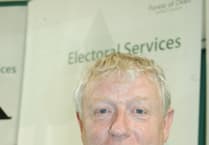CONCERNS have been raised over the average time it takes ambulances to respond to a 999 call from people suffering strokes, chest pains and difficulty breathing.
The target response time for an ambulance responding to a category two emergency call is 18 minutes but over the winter has taken on average 34 minutes for one to arrive.
Health bosses say South Western Ambulance Service NHS Foundation Trust (SWASFT) is improving its response times.
But Councillor Paul Hodgkinson (LD, Bourton-on-the-Water and Northleach), who has long raised concerns about this issue, asked what is being done to further improve the service.
Speaking at yesterday’s (March 14) health overview and scrutiny committee meeting, Cllr Hodgkinson asked how NHS bosses would get to the target of 18 minutes.
He said: “It has been an extremely challenging winter for everyone in the country in various ways and in particular the NHS.
“I can see you’ve made lots of progress. What I wanted to dig into a little bit is ambulance response times.
“Those of us in the rural areas have seen ambulance response times target consistently for a decade. Looking at category two ambulance response times, the latest figure was 34 minutes and it should be 18 minutes.
“I can see you’ve made a lot of progress since December but the bottom line is we are still well off the target.
“This gets raised with me a lot in the Cotswolds because the Cotswolds’ figures are actually worse than that.”
Director of Strategy and Transformation at NHS Gloucestershire Integrated Care Board, Ellen Rule said more funding is being allocated to the ambulance service and told the committee how they are tackling the issue.
She also explained response times are affected by different issues including handover delays which take ambulances out of action, the number of ambulances available and the level of demand.
“We have work going on in every one of those fronts. We have seen a huge improvement in terms of hand over delay taking ambulances out of circulation.
“That is very much reduced. We don’t see a direct straight line correlation. Sometimes category two can move up and down when we are delivering the same level of improvement.
“Additional investment is going into SWASFT in terms of extra capacity on the roads which aims to improve the response time as well. Investment went in this year and more is planned next year.”
She also said they are working with SWASFT around taking patients off the “stack”.
“That’s about where there may be an alternative service that could take a patient where we don’t need to convey. That again reduces the demand for SWASFT to convey which supports them to improve response times.”



Comments
This article has no comments yet. Be the first to leave a comment.